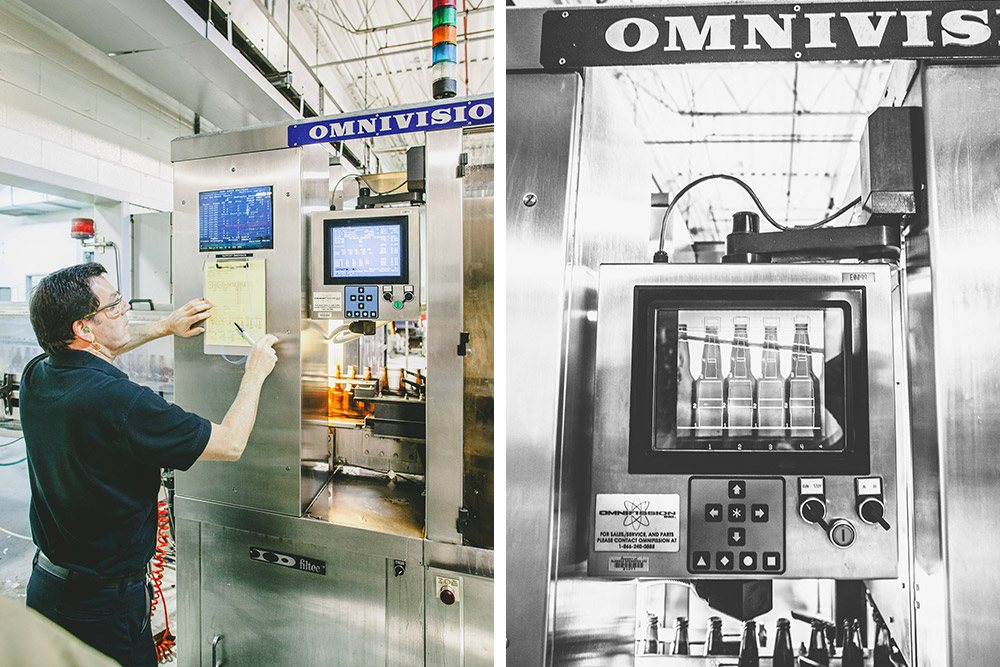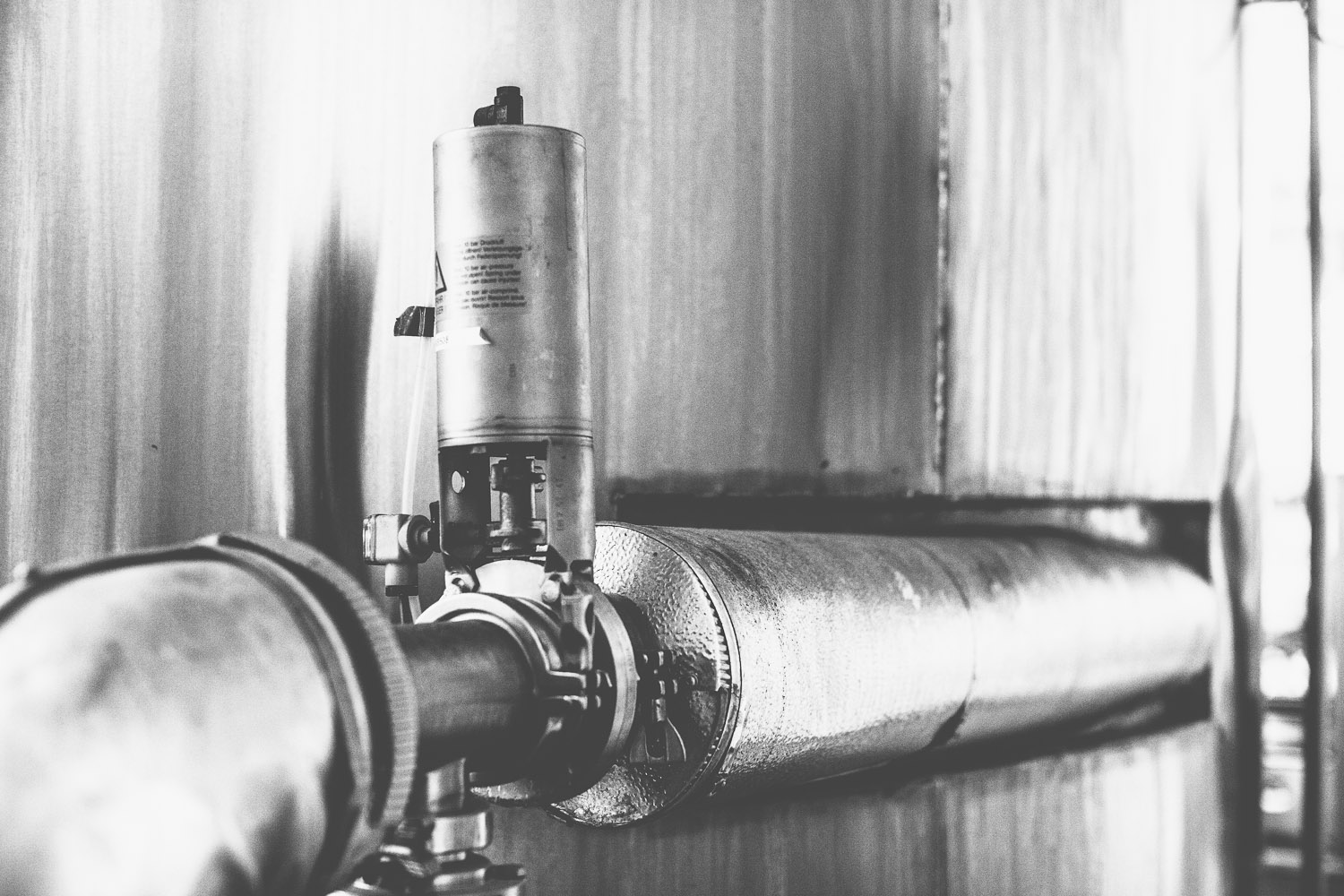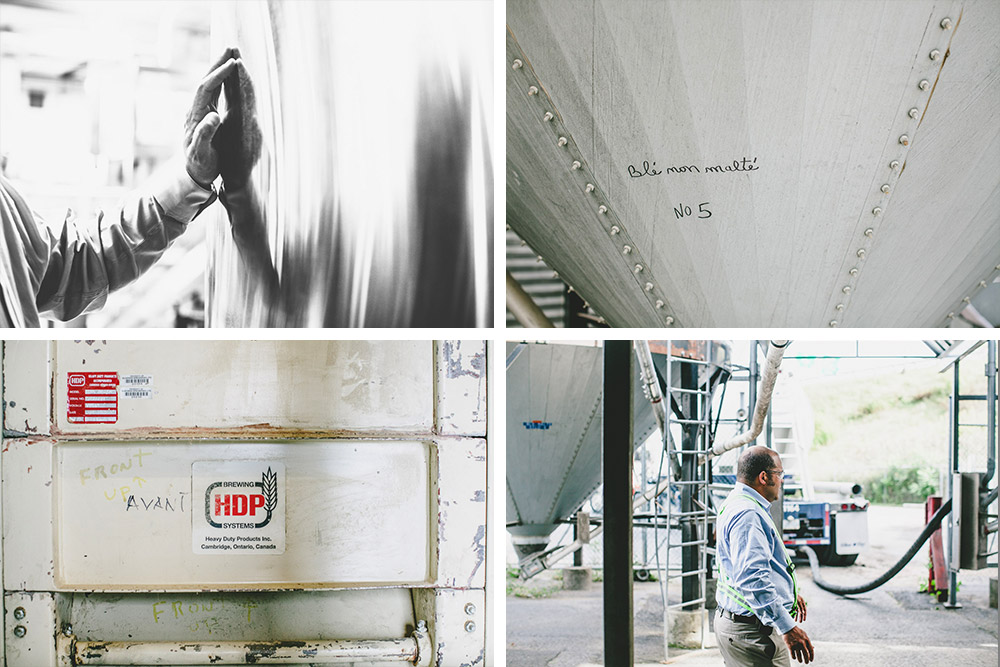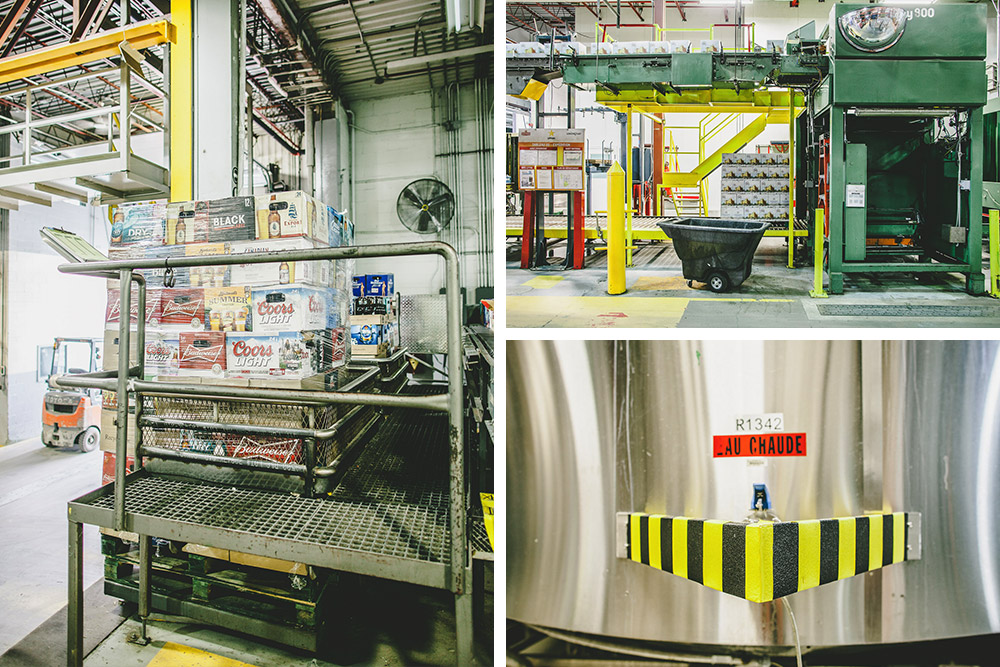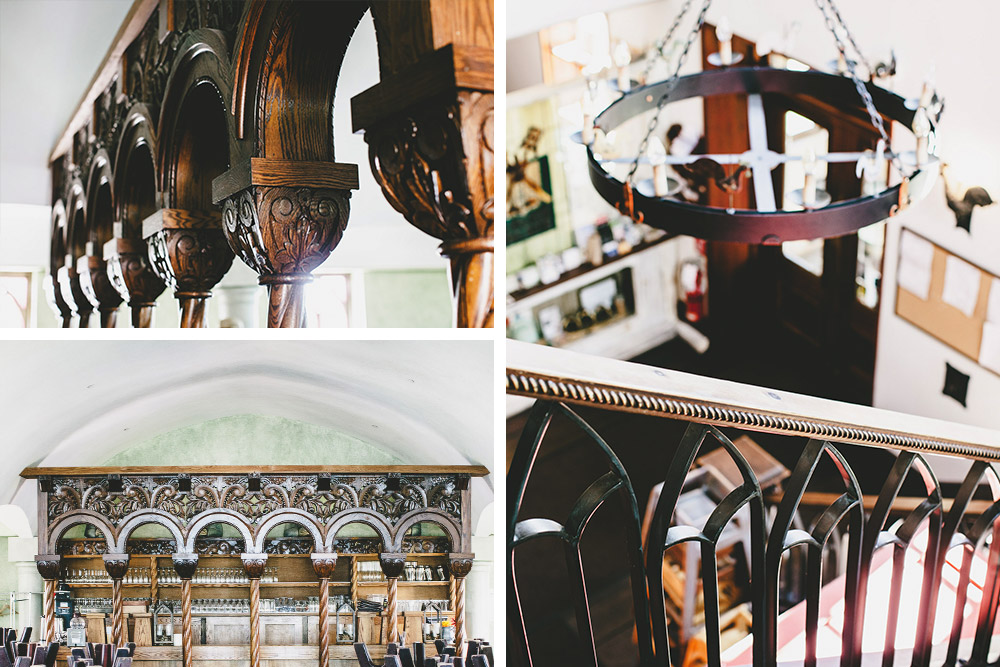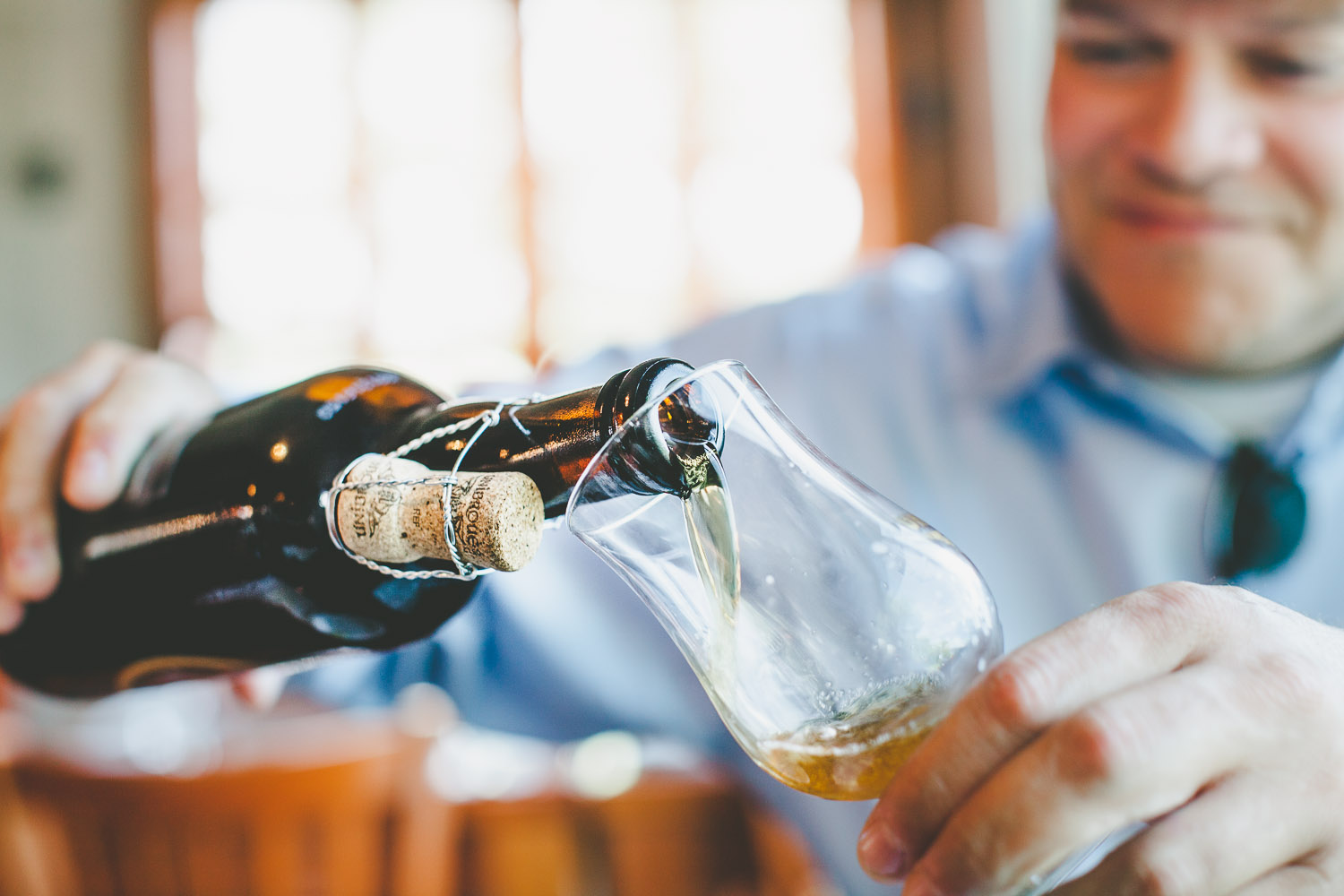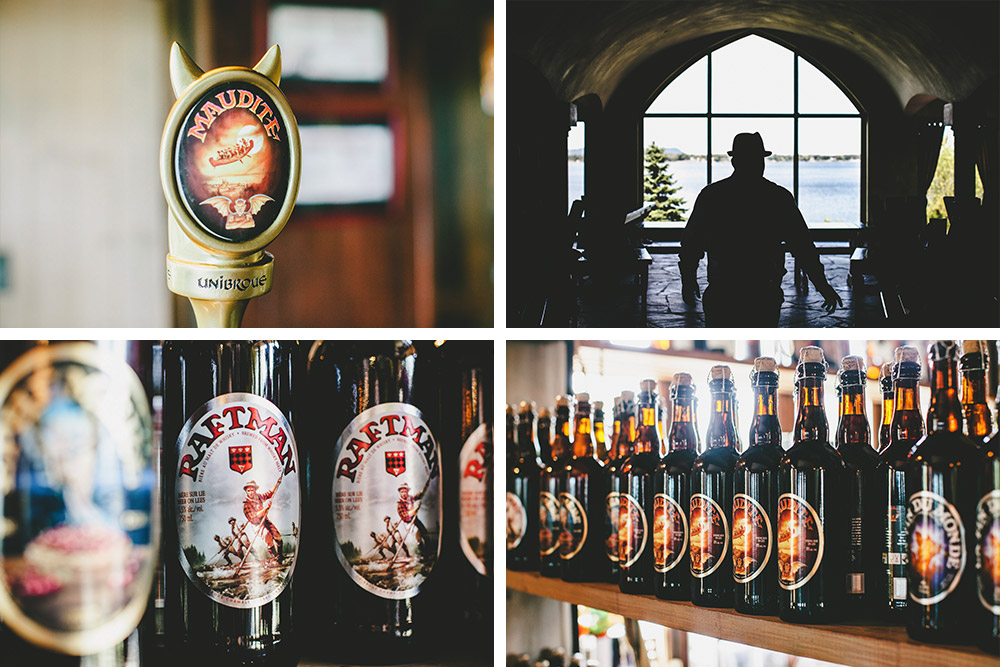The story of beer in Canada is like many other things in Canada — there is a national interest, and there is Quebec’s interests.
You see, before the US entered into that dark period in American brewing history, Prohibition, Canada passed it’s own national Prohibition laws from 1918-1920 as a wartime effort, and then the provinces decided for themselves after that. Just like in the US, Prohibition was a long war temporarily won, and then repealed. But while it lasted 13 long years in the US, Canadian Prohibition lasted only a few years in most cases. And the biggest opponent by far was the province of Quebec. Where Prohibition was marginally favored in the English-speaking provinces in perpetuity, Quebec voted 81.2% against it, forcing a provincial enactment rather than a national law. Quebec’s dry spell didn’t last even a single year.
All this to say — Quebec takes itself, and its beer, quite seriously.
France was the largest influence on Quebec’s beer history, with terroir being a key component of the rustic, home-made beverage. Spruce tips were used in place of hops for 17th and 18th century colonists. Roots and other spices were plentiful, and mentions of breweries in the area go back to the mid 1600s. The larger breweries we’re all familiar with today, Molson, Labatt, and O'Keefe, moved in over the next two hundred years, and comprised the totality of production brewing in the province of Quebec until the 1980s, when we saw a renaissance in brewing as one microbrewer after another popped up. Finally, in 1990, Unibroue was established in Chambly near the Richelieu River just southeast of Montreal, and quickly became the prize of Quebec’s brewing history.
Unibroue’s story has always been one of merger and acquisition, but perhaps not in the way you think. Yes, most craft beer lovers, especially the Canadians, recall the day when they learned that Quebec’s great craft brewery was sold to “the English,” by which they mean Sleeman, an Ontario brewing corporation, and then again shortly after to the Japanese conglomerate, Sapporo. Unibroue’s brewmaster, Jerry Vietz, remembers the reaction well:
“It was much worse that with Goose Island and others in the US. In Quebec, it’s still French-Canadian here. So outside Montreal, they speak French, and many don’t speak English at all. So I believe André Dion [the founder] represented that culture, and with all the French beer names — Dion was promoting all this. When he sold the brewery, all the separatists saw him as a Judas. He sold the brewery to the guys we were against. But that’s all in their minds, because in the end it’s all about business. I remember back then I was looking at the recycling bins on the streets and saw all the newspaper headlines, and all the broken Unibroue glasses. It was a big deal."
Much of that sentiment remains a visible scar among the province’s most adamant craft drinkers. But for others, the wound has largely healed or become irrelevant with the great number of breweries opening these days. Many I spoke with in my week of travel were happy to reflect on Unibroue’s legacy, especially among brewers who were inspired by Unibroue to start their own. Most brewers seem to feel obligated to express their former disappointment with the sale, but their own experience and optimism for the craft beer business overall has since softened this hard-line stance. Brewing is a business, however personal, and many now see Dion’s decision as a matter of evolution, rather than loss. Besides, as most will tell you with a sparkle in their eye, the beers are still world-class.
"There was a big wave at the beginning,” explains Vietz. "And then they said the beer doesn’t taste the same now because it’s owned by the Ontarians. But this is all bullshit. Because when these guys bought the brewery and invested in it, we got much better control of the product. We had capacity issues, but also because we were not pasteurizing the beer, you should have seen all the beer we were dumping back then. It’s all about quality. We don’t want to have a beer that’s on the market that’s not quality. What I love about Unibroue, is that when you have some other craft beer, often it’s good, but it’s not consistent. We want people to have the same experience with our beers every time. We’re more able to achieve that now. And it’s a big investment. Especially with Sapporo because they’re very, very rigid with quality."
Even in its earliest days, Unibroue itself was built on the bones of other brands. In 1990, business partners Serge Racine and André Dion (a former president of a hardware store chain) acquired 75% of La Brasserie Massawippi, Quebec’s first microbrewery founded in 1982. They purchased the remainder of the business the next year and transferred their interest to Unibroue. Massawippi became a subsidiary and then merged with Unibroue altogether in 1993.
It was on the back of that business venture that Dion and Racine built one of the most famous breweries in the world, producing bottle refermented Belgian-style ales. Dion fell in love with the style, like so many do, on a trip to Belgium. Ever the astute business man, he observed his wife taking to the Belgian styles despite her general lack of interest in beer. Returning to North America, he realized how large the opportunity was to bring these effervescent, flavorful beers to the table, and set out looking for a partner. After consulting with a Belgian brewer, his first beer was Blanche de Chambly, a Witbier brewed on lees, which refers to the residual yeast beds that settle on the bottom of the brewing vats, or in this case the bottle itself, once they go dormant.
In 1992, after his first taste of Blanche de Chambly, Robert Charlebois, a well-known singer-songwriter, approached Dion with an offer for the brewery. Dion turned down the sale, but Charlebois' offer gave the brewery its first marketing concept, bringing Charlebois on as a partner and elevating the brand’s awareness. Following this new partnership, Unibroue began aggressively expanding and brewing for the export market. But it was La Fin du Monde, their 9% Abbey Tripel ale that truly put them on the world map. Brewmaster, Jerry Vietz recalls the attention the beer received as their first export, for better and worse: “It was very popular, and people thought La Fin du Monde was the name of the brewery. We had to use the foil afterwards to put our logo there so they understood who Unibroue was. And with the amount of alcohol and the spices we used, the government wanted to call it malt liquor, but André Dion fought it. I still fight that mentality myself by pointing to the time long before the current laws were developed to define lagers, to a time when we were using herbs and spices before hops even existed.”
Jerry Vietz is a stout, broad-shouldered man with fists like mallets. He looks at home in the brewery, but one could just as easily imagine him on a construction site directing larger-than-life equipment. He’s the continuity between Dion and sales to both Sleeman and Sapporo, and it’s Vietz’s face that now graces the brewery’s marketing and events. But his role at Unibroue was entirely unlikely. As he puts it, "I only wanted to be here for 2-3 years.”
Vietz studied food sciences and afterwards went to work in the cider and wine industries in Quebec, implementing microbe labs, building IT systems to track fermentation data, and running QA programs. Then he started an obsessive array of personal projects devoted to fermentation, which lead him directly into the path of Unibroue. Well, maybe not so directly.
"I was brewing and fermenting wine at home just to experiment. I was making a very nice strawberry wine, which is really hard. You lose a lot of flavor for things like strawberries and raspberries through fermentation. I had to manage the temperatures based on the types of acids. During that time, I also had a little farm with my wife, with our own animals, we made the cheese, our own wines, beers, I grew my own malts and hops. But I still had some fees to pay for my studies in food science, so I figured I would go work with some of the cheese factories for a couple years. And while I was looking at the cheese factories, a guy told me he was working at Unibroue — he was filtering the beer. It was small back then. So I met the brewmaster at the time, and the owner, Dion. They were excited about all the things I was making at home, but they didn’t have a role that was interesting to me. But I liked the profile of the brewery. When I left that day, André called me and said we needed to talk. He told me to stop taking interviews with the cheese factories. I came back the next day and he told me about many other projects they could create, one of which was a distillery at the time. He was curious about distilling different fruits and even Unibroue beers to produce liquors. So I signed on.”
But Vietz’s first role was technical. In his first year, he worked on automation. Unibroue was a complicated, highly manual operation that required long hours. As a result, they were losing employees. So Vietz set out to make the environment more comfortable and efficient. That helped clear the way for the fun stuff, at least for a short time: "I made some distillations with Trois Pistoles and Maudite, some fruits from the north of Quebec. It was very interesting. But finally when it was sold to Sleeman the following year, they didn’t want to continue that project. It was interesting to me, and maybe we could have been pioneers. But they promoted me to the director of the brewing department and that meant managing capital expenditures and structural changes as we became bigger and bigger.”
That’s what it means to be Jerry Vietz, brewmaster and director of one of the most important breweries in North America, continuing under corporate ownership. Despite all the growing pains, operational shifts, changes in leadership, and integration with the national brewing group, he’s been able to see it all in a positive light. And that’s because as much as he’s a fermentation artist, he has another side that appreciates the system, the math, the engineering part of it all. As far as he’s concerned, all this investment and change means more refermented beers, with higher quality, coming to market under the Unibroue name — even if that means he has to make some Old Milwaukee’s Best and Silver Creek to get there.
“The best thing for us is to brew more and more of these refermented beers at a premium over lagers. But we have a national capacity issue in the Sleeman group. So we have to do some contract for them. They want to optimize as much as possible. But it’ll be best when we can get away from doing that with our next expansion with another facility that produces that lager. Then we’ll have more capacity to experiment on referm. Brewing referm means we add a precise amount of yeast and sugar to store in the warm-room for weeks. It depends on the abv, two to four weeks, until we achieve the refermentation in the bottle. It’s very important and part of the challenge because we also brew lager. Even more since we were bought by Sleeman, because we had a lot of capacity issues then. I was always using the extra capacity to experiment and develop new beers. But right now if I use a fermenter to develop a new beer with our existing capacity issues, I’ll create backorders on the market. It makes sense — any brewer needs to fill capacity to stay in business, but that’s the challenge we have regarding innovation to develop new products like we were doing before.”
Like any brewery, large or small, the tension between meeting market demand with exiting products versus introducing new beers is more than just a personal preference. The business decision is just as problematic, because both directions are opportunities to grow. It’s one of the reasons why some breweries will double down and produce one thing, such as Heady Topper, and others will actively work to diversify their portfolios so as to not remain too dependent on any one beer. So many breweries in the US are trying to put a cap on their IPA sales right now and get their customers to explore other styles they want to make, partly to keep themselves sane, and partly to ensure they have a loyal customer in the long-term once the style becomes less popular.
“It’s easier to sell a new beer than to sell the existing brands,” explains Vietz, "because a new beer sells itself. So now we always work on one beer at a time, with one fermenter used to develop a new product. But this new product won’t always be a Unibroue brand. If corporate says 'we realize your biggest seller for Sleeman in Quebec is Silver Creek' (and this happened in 2005) 'so you will brew Silver Creek there.’ So by the time I work on this project, and match the Silver Creek, because the water is totally different from one place to another for example, it could be even longer to match Silver Creek than to develop a new Unibroue beer. I did that with three of their brands over the years. The good news about that is that we’re more serious than before about new recipes. Back then, Unibroue was used to having four or five different beers a year. But in the end if you count all the beers launched between 2000-2007 [before the sale], and 2007-now [after the sale], it’s the same amount of years, and the same amount of new beers still on the market. And that’s because they were developed more seriously. Before, we were launching a beer that would sell at the beginning and then realize it didn’t work. We’re not a brewpub, so we couldn’t keep going like that."
Today, Unibroue operates with increasing independence, apart from the capacity relief they offer to the rest of the Sleeman group of breweries. Saporro is investing $2MM a year to upgrade safety, capacity, and the microbe lab, among other programs. Since the sales, Unibroue’s capacity has grown from 30,000 to 180,000 hectoliters behind a 130BBL brewhouse, a ten-fold increase. "Sapporo has never really touched the Unibroue part,” says Vietz, "They don’t ask me about ingredients or anything. They just look at the results, the medals, that the beer sells.” And he doesn’t see that changing, not realistically.
Acquisitions in the US often mean moving popular beers into the larger network to amp up production, such as the Chicago craft brewery, Goose Island, moving it’s popular 312 wheat ale to the Anheuser-Busch brewery in Baldwinsville, NY. But Unibroue’s beers aren’t so easily transportable. "The refermentation, the microbes, the water, the bottling line with the cork and cage, the 4-packs,” cites Vietz, "it’d just be so much investment to move our operations somewhere else. And now we’re unionized, which also makes it challenging to change things, which is a cultural difference as well between here and Japan. But as much as unions can apply pressure, we can’t think we’re irreplaceable either. You never know."
Unibroue’s story in Quebec will never be an easy one — least of all for Jerry Vietz. But at least for him, for now, he’s committed to the future of the operation he’s grown to love and symbolize. But for those that want to remember what the old days were like, when those two daring business partners Andres Dion and Serge Racine took their first adventurous steps together, there remains the Le Fourquet Fourchette restaurant just down the road by Fort Chambly on the water. There, the tied house concept serves only Unibroue beers, as it always has, alongside local fare, charcuterie, and incredible cheeses. When Sleeman bought the brewery in 2005, Le Fourquet Fourchette was excluded from the arrangement, and sold to the manager of the restaurant at the time. This is where Jerry Vietz still takes his lunches, overlooking the river, and exhibiting the brewery’s storied past.
“Try this,” Vietz said, ”it’s like what you call a Shandy in the US. Iced tea with the Raftman beer. It’s wonderful."
 Michael Kiser
Michael Kiser














